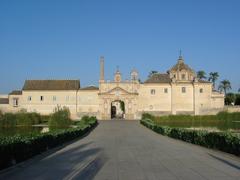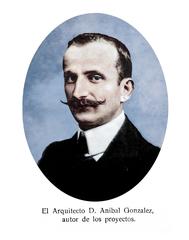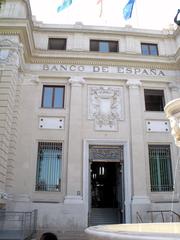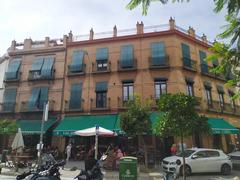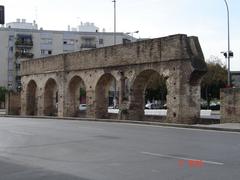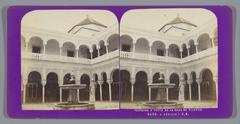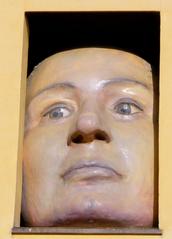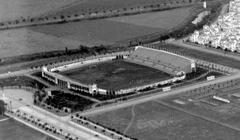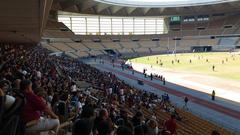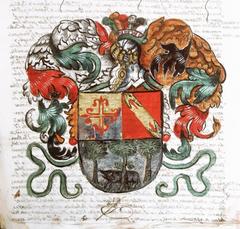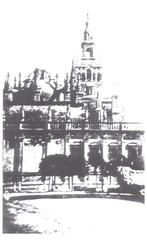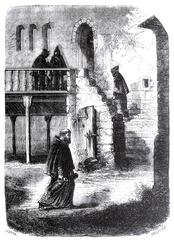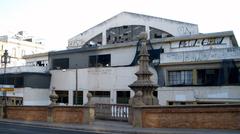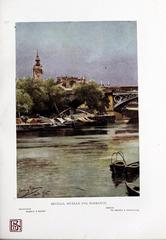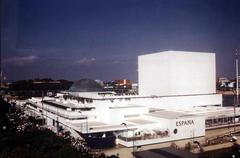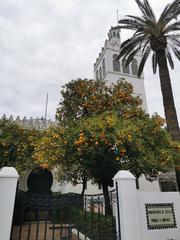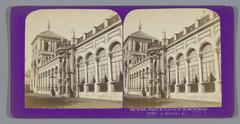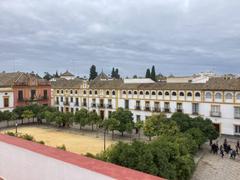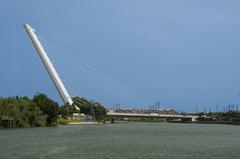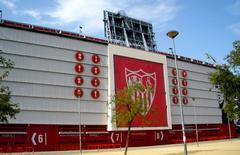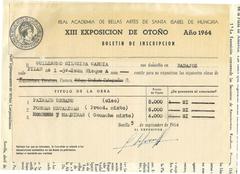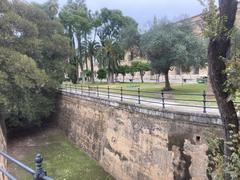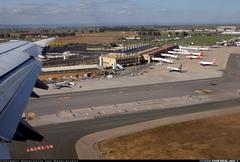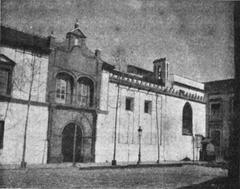Molino de San Juan de Teatinos: Visiting Hours, Tickets, and Comprehensive Guide to Seville’s Historic Water Mill
Date: 14/06/2025
Introduction
Nestled on the western outskirts of Seville along the banks of the Guadaíra River, the Molino de San Juan de Teatinos—also known as the Molino de Tizón—stands as a testament to Andalusia’s layered history of technological innovation, agricultural enterprise, and religious influence. Dating back to at least the 14th century, this emblematic water mill is not only a relic of medieval industry but also a symbol of Seville’s enduring relationship with water, land, and community (Sevilla Legendaria; Diario de Sevilla). Today, it forms part of the Parque de Riberas del Guadaíra and features prominently in the “Ruta de los Molinos,” a cultural route that highlights Seville’s rich water mill heritage and natural landscapes (turismosevilla.org).
This guide details the site’s historical background, architectural features, cultural significance, ongoing conservation efforts, practical visitor information—including opening hours, ticketing, accessibility, travel tips, and nearby attractions—and recommendations for making the most of your visit to this remarkable Seville historical site.
Historical Overview
Medieval Origins and Early Development
The Molino de San Juan de Teatinos traces its roots to the 14th century, though its location along the fertile Guadaíra River suggests even earlier origins, with both Roman and Islamic influences shaping the region’s agricultural infrastructure. After the Christian Reconquista, the property was granted to Ferrand Pérez de Portocarrero and later inherited by María Alfonso Tisón—hence the alternate name “Molino de Tizón.” The site’s function as a hydraulic grain mill was integral to Seville’s medieval economy, which relied on water-powered technology for flour production (Sevilla Legendaria).
Religious and Industrial Transformations
Ownership of the mill shifted to the Theatine Order (Orden de los Teatinos) in the late medieval period, infusing the site with spiritual significance and linking it to charitable works and the nearby San Cayetano convent in today’s Tiro de Línea district. By the 18th century, the Jesuits assumed control, initiating industrial diversification. The mill served not only for grain but also as a gunpowder factory, cannon boring site, and eventually, a marble sawmill and cortijo (farmstead) following the 19th-century Desamortización (ABC Sevilla; Diario de Sevilla).
Architectural Features
The mill is distinguished by its robust neogothic nave and Lombard-style decorative motifs, which were added during 19th-century renovations. The structure’s masonry, arched windows, and buttressed walls were engineered to withstand the vibrations of heavy milling equipment. Remnants of water channels, original stone beds, and traces of milling chambers reflect the ingenuity of medieval and early modern hydraulic engineering (Patrindustrialquitectonico). A prominent tower (torreón) rises approximately 9 meters and is capped with a four-sided tiled roof, serving both defensive and operational functions (turismosevilla.org).
Conservation Efforts and Restoration
After decades of abandonment following the 1960s, the mill suffered significant deterioration. In 2021, it was included in Hispania Nostra’s “Lista Roja del Patrimonio,” signaling its endangered status (Diario de Sevilla). The Seville City Council responded with an emergency intervention, allocating €286,000 to stabilize the structure, clear invasive vegetation, and initiate archaeological studies. Between 2024 and 2027, a comprehensive municipal plan will invest over one million euros to consolidate the mill and integrate it into the city’s green and cultural routes (diariodesevilla.es).
Objectives of the restoration include:
- Structural consolidation and preservation of original features.
- Restoration of the water wheel and milling chambers.
- Enhanced accessibility and interpretive signage for visitors.
- Integration with the Parque de Riberas del Guadaíra and the Anillo Verde Metropolitano Sur.
Cultural Significance
The Molino de San Juan de Teatinos is emblematic of Seville’s ingenuity in sustainable water management and rural industry. It played a vital role in local food production, supported community gatherings and traditions, and later became part of Seville’s industrial expansion. Today, the mill is a focal point of the “Ruta de los Molinos,” serving as a living classroom for heritage education and a platform for cultural events (turismosevilla.org).
Visitor Information
Location and Access
- Address: Parque de Riberas del Guadaíra, on the western edge of Seville’s Tiro de Línea district.
- Getting There: Accessible by car, bicycle, and public transport (bus routes connect with central Seville). Walking and cycling trails link the mill to other sites along the Ruta de los Molinos (mapcarta.com).
Opening Hours
- Park and Exterior Access: Open daily, year-round, during daylight hours.
- Interior Access: Currently restricted due to restoration. Full access is expected after late 2025, pending project completion.
Tickets
- Current Access: Free—no ticket required for exterior and parkland.
- Future Access: Details on admission fees and guided tours will be announced on the official tourism website of Seville once restoration concludes.
Accessibility
- The park offers generally accessible paths, though some terrain near the mill may be uneven or unpaved. Comfortable footwear is recommended, and visitors with mobility concerns should check current conditions before visiting.
Guided Tours, Activities, and Amenities
- Guided Tours: Periodic tours of the Ruta de los Molinos, including San Juan de Teatinos, are organized by local heritage groups and the Ayuntamiento de Sevilla. These tours offer historical interpretation, demonstrations of traditional milling, and ecological insights (turismosevilla.org).
- Educational Programs: Workshops and activities for school groups and families are held during heritage days and local festivals.
- Amenities: Parque de Riberas del Guadaíra features picnic areas, playgrounds, birdwatching spots, and interpretive panels. Local bars and restaurants nearby serve traditional Andalusian cuisine.
Travel Tips and Seasonal Highlights
- Best Time to Visit: Spring and autumn offer mild weather and vibrant foliage; summer festivals provide cultural vibrancy but can be hot (andalucia.com).
- What to Bring: Water, sun protection, and a camera for capturing the mill’s picturesque setting.
- Nearby Attractions: The park itself, additional historic mills along the Guadaíra, the Monastery of Santa Clara, and Seville’s famed city center landmarks.
Visitor Guidelines
- Respect all safety signage and barriers, especially during restoration.
- Remain on marked trails and avoid climbing on structures.
- Support conservation by participating in heritage programs or spreading awareness.
Frequently Asked Questions (FAQs)
Q: What are the visiting hours for Molino de San Juan de Teatinos?
A: The park and exterior grounds are open daily during daylight hours. Interior access will resume after restoration is complete.
Q: Do I need a ticket to visit?
A: No ticket is required for the outdoor areas. Ticketing for interior visits and guided tours will be announced post-restoration.
Q: Are guided tours available?
A: Yes, guided tours of the Ruta de los Molinos are offered periodically. Check with official tourism resources for schedules.
Q: Is the mill accessible for visitors with reduced mobility?
A: The park is generally accessible, though some uneven terrain exists near the mill.
Q: How can I support preservation efforts?
A: Volunteer through local heritage initiatives, donate to conservation programs, or share information about the site online.
Photo Opportunities
- Exterior views of the mill with the Guadaíra River backdrop.
- Detail shots of the tower and stonework.
- Interpretive signage along the Ruta de los Molinos.
- Visitors enjoying the lush park surroundings.
Alt text suggestions: “Molino de San Juan de Teatinos hydraulic mill along the Guadaíra River in Seville,” “Defensive tower of Molino de San Juan de Teatinos showcasing Andalusian hydraulic architecture.”
Conclusion
The Molino de San Juan de Teatinos is a captivating fusion of history, architecture, and nature—an essential stop for those seeking to experience Seville beyond its bustling city center. Its centuries-old walls reflect the evolution of Andalusian society, and ongoing conservation ensures that future generations will continue to draw inspiration and knowledge from this remarkable site. Plan ahead, check official sources for the latest updates on visiting hours and ticketing, and immerse yourself in one of Seville’s most enchanting historical treasures.
Plan Your Visit
For up-to-date information on restoration progress, visiting hours, ticketing, and guided tours, consult the official Seville tourism portal and local tourism updates (Welcome to Seville). Enhance your visit with the Audiala app for interactive maps and audio guides.
Further Reading and Sources
- Sevilla Legendaria
- Diario de Sevilla - Molino de San Juan de Teatinos
- Diario de Sevilla - Municipal Heritage Plan
- Patrindustrialquitectonico - Restoration Blog
- Turismosevilla.org - Ruta de los Molinos
- Andalucia.com - Festival Guide
- ABC Sevilla - Jesuit Ownership
- Welcome to Seville - Tourism Updates
